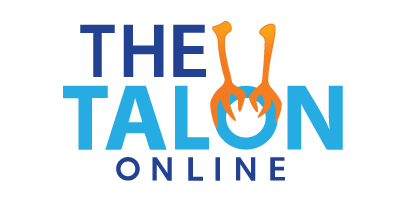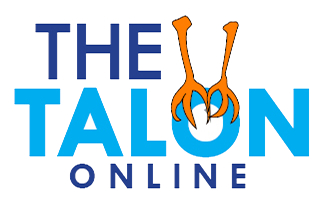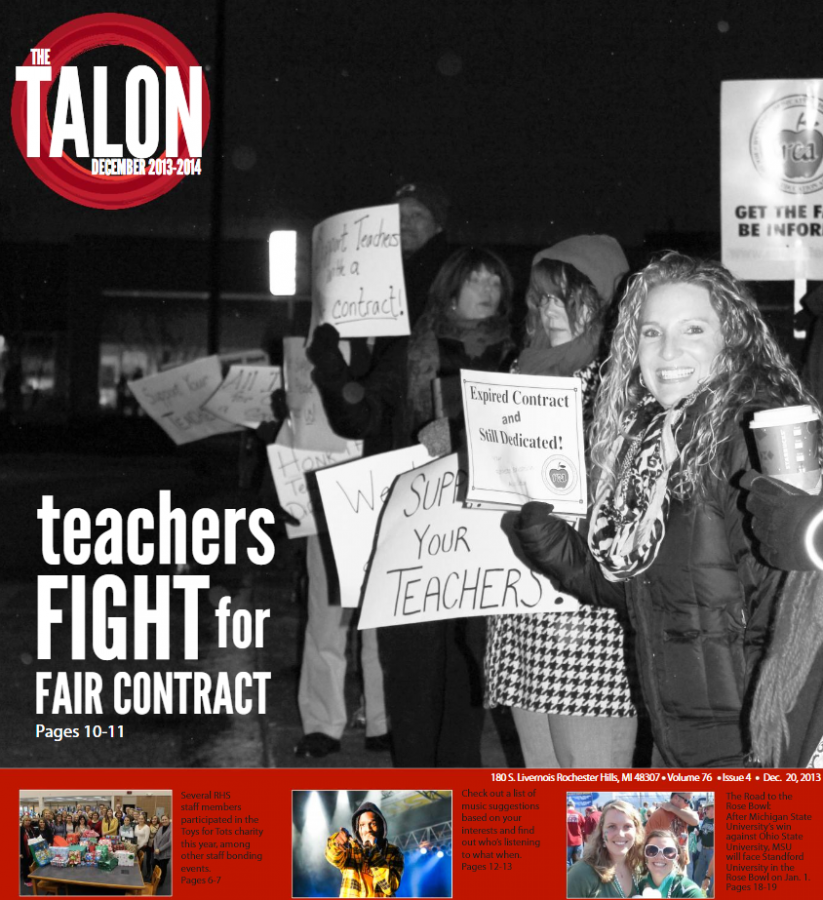The Talon through the ages
The evolution of the RHS student newspaper
March 18, 2019
Every month, The Talon’s writers and editors work to create a paper that allows those in the community and around the school to see into the everyday lives of Falcon students and staff. Today, the Talon takes form in a monthly, color-print newspaper and a modern website to tell stories about the ins and outs of student life, but it wasn’t always that way.
If a student were to travel back to The Talon in the 1980s, he or she would find a very different world. This can be seen in early editions of The Talon, which featured black and white pictures and an occasional colored cover. Former editor-in-chief and current RHS English teacher Mrs. Jennifer Schrems shares her experience with the early Talon.
“It was literally like a workbook almost,” Mrs. Schrems said. “It was not at all newspaper print, newspaper sized pages or anything, and we always had someone draw the front cover. It was like a piece of art that depicted what was going to be in the issue.”
In addition to images, The Talon in the 1980s physically looked much different that it does today. The present newspaper is printed on thin newsprint paper, while in The Talon’s early years, it would be on a thicker cardstock. Also, the size of The Talon’s pages have gotten much larger over the years, while the number of pages in each issue has been reduced.
“This might sound silly, but the fact that it looked like an actual newspaper is really kind of cool,” Mrs. Schrems said. “When I was on The Talon it was more like a book of paper stapled together.”
During this time, technology, like computers, was still in its infancy, and this meant that Talon staff writers had to rely on very basic programs like Macintosh Adobe to lay out their pages. This process was much more time consuming and contributed to The Talon being published on a less frequent basis than it is now.
“We used Mac Adobe,” Mrs. Schrems said. “We would then print the pages one at a time and then take them to the board office downtown, and the board office would run the copies for us.”
With the emergence of the modern computer, The Talon changed its format into something much more similar to what readers know today with the adoption of some color pages and newspaper style sheets of paper.
“The format is obviously completely different,” Former editor-in-chief from 2008 to 2010 and current Reuther Middle School teacher Ms. Jordan Hubbard said. “We were strictly a print paper with an 11 x 18 if I’m remembering correctly monthly issue that had an 11 x 11 insert called ‘The Hatchling.’ While we had quite a few stories an issue, we couldn’t publish them as frequently as the current Talon staff can as we were limited to that monthly publication date.”
In addition, with the advent of the internet, knowledge of events outside Rochester and even the United States was available. This allowed for Talon writers to cover a much larger range of topics while allowing for more detailed coverage of news happening across the country.
“We covered the H1N1 virus, which for some reason that one sticks out,” Mrs. Hubbard said. “In addition to [H1N1], natural disasters, the privatization of district employees, prior review, and of course the usuals – sports games, musicals, band concerts, etc.”
Mrs. Julia Satterthwaite was The Talon’s advisor from 2005 to 2016. She witnessed the Talon undergo significant changes, including its transition from a simple issue with minimal color, to its modern format and functioning website.
“In the time I advised The Talon, it evolved from a small broadsheet with one splotch of spot color on the front page to a larger broadsheet, later with a magazine-style insert called ‘The Hatchling’, and then finally to its current magazine format,” Mrs. Satterthwaite said. “Every year we added more color and our designs got better.”
Mrs. Satterthwaite’s efforts also helped propell The Talon to become a competitive and acclaimed newspaper. The Talon won multiple Spartan awards and Mrs. Satterthwaite was awarded the MIPA’s Golden Pen honor.
“I was able to turn The Talon from a bronze newspaper to a multiple year Spartan Award winner, and even a two-time National Scholastic Press Association award-winner,” Mrs. Satterthwaite said. “I saw the biggest growth of the publication when students were regularly attending the MIPA Fall conference, One-day workshop, summer journalism workshop and attending the JEA/NSPA Fall Convention.”
The website, which was also developed during Mrs. Satterthwaite’s time as adviser, appealed to a more technological group of modern readers and helped provide more timely content. Social media platforms including Twitter and Instagram have also strengthened The Talon’s news coverage and reader accessibility.
“Technology has significantly impacted the way people consume news, which means it’s up to publications to continue to adapt. We started the website as a way to include more digital coverage, and then added social media accounts to cover school events,” Mrs. Satterthwaite said. “When we first started with digital content, Talon staffers still preferred to write for the newspaper because there’s something really special about seeing your name in print on a physical copy of the paper, but in all honesty, if you look at what teenagers do in their spare time, they’re not flipping through a paper — they’re scrolling on a phone.”
In 2016, Mrs. Satterthwaite moved to California and present Talon adviser, Mrs. Aleah Facca took over. Class of 2018 editor-in-chief, Lauren Karmo, experienced the change in adviser leadership from her sophomore to junior year. She agrees with Satterwaite that digital media platforms are important in the future of journalism.
“The website always needed work when I was on staff. It has so much potential, and if it’s used properly, it can gain a lot more attention for the publication” Karmo said. “Before there was such a heavy emphasis on the print, what things will look like on the page in your hands, but I think The Talon is in a transitional period where the website and social media is that much more important, especially for the audience.”
Mrs. Facca has advised just over two years, and The Talon has still maintained its reputation, winning a Spartan 2017 and a Gold MIPA award in 2018. Today, many of Talon subscribers prefer the digital copy of the newspaper, rather than the traditional physical print.
“We upload each edition of The Talon to a website called Issuu,” Mrs. Facca said. “Then, we email subscribers a link to the latest edition.”
Although The Talon works to improve and emphasize their use of technology, it has continued to print a physical copy of the paper on a monthly basis. Therefore, today’s Talon writers need to be able to use layout applications like InDesign while being proficient on social media platforms.
“I think that to learn the basics of InDesign, it’s not too difficult,” Talon sports editor Bianca Mow said. “Although it does the job, it’s harder for new students to pick things up.”
The Talon has changed in many ways over the years, beyond making use of new technology. Administration also instituted prior review and now reads each paper before it is published. Even with these changes, English teacher and former Talon adviser Mr. Chuck Kowal points out that much has stayed the same.
“The production was probably a lot like it is today,” Mr. Kowal said. “We would brainstorm story ideas, assign stories, we had deadlines and meeting with the editors to go over the story and revise them. Not every story would run, so we would have a little bit of competition.”
Overall, the experiences of Talon writers and adviser experiences writing for one of the oldest and decorated student newspapers in Michigan has impacted them and their futures.
“Writing for the Talon was always one of the most fun things I did in high school,” Karmo said. “It was stressful at times, but I loved the versatility and I now have a well rounded portfolio because of it.”
Mrs. Satterwaite offers advice to future and present Talon journalists.
“Empower the students to do the work, from hatching the story ideas to sending pages to the printer and everything in between,” Mrs. Satterthwaite said. “The beauty of scholastic journalism is that students get to be in charge of their own education entirely, with coaching and encouragement from the adviser.”



